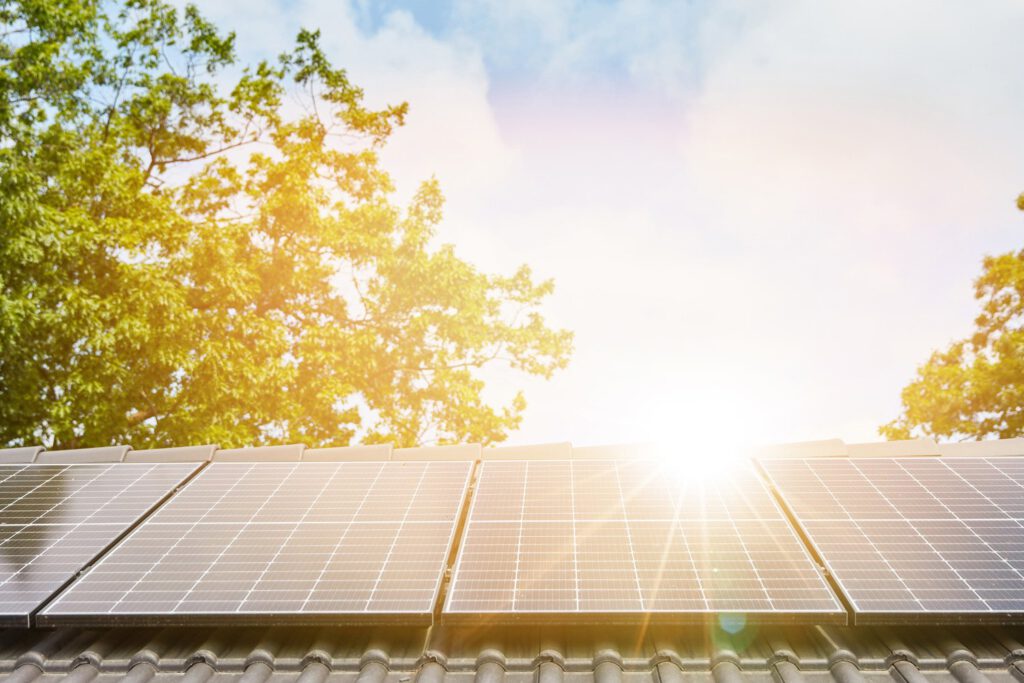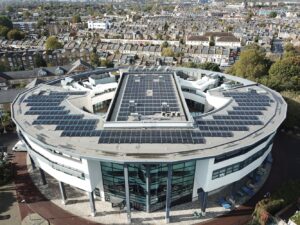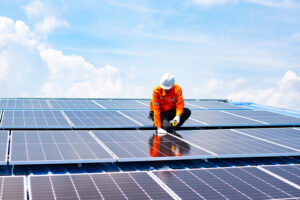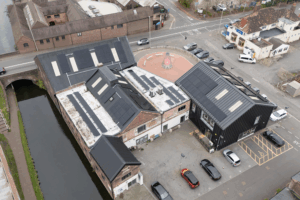During these trying financial climates, the cost of everyday living is truly skyrocketing. With the cost of weekly supermarket shops almost doubling, and with the cost of fuel simultaneously soaring along with energy costs, it’s no wonder that many people are considering making the switch to alternative energy sources. Ultimately, solar power is becoming more and more popular.
Saving money is the most obvious and popular incentive for making the switch to solar. It’s shaving a digit off total energy costs on a yearly basis for many homeowners. And in the current monetary climate, this is highly attractive to many who wish to cut costs.
Solar can save you hundreds in the long run. But like everything – there’s pros and cons. We run through both positive and negative aspects to implementing solar power – to give a well-rounded, realistic and well-informed overview of solar energy.
Energy independence
You don’t need to rely on the national grid for power. Solar is reliable, consistent and it’s easy to just leave it to function independently. It doesn’t really require much maintenance either. Yearly checks are advisable, but you wouldn’t need to replace the unit for another 20 years maximum. This means solar is a perfect option for those wishing to cut long-term costs whilst remaining in the same home or premises.
Greener energy source
Financial benefits aside, going solar just ticks environmental boxes that fossil fuels never can. By going solar, there is absolutely no carbon footprint on your property or premises. All it requires is clean water for functioning – and the rest is simple. It doesn’t emit any greenhouse gases or carbon – so it’s totally clean. If everybody could miraculously switch to solar power just-like-that, carbon emissions would drastically plummet. It is estimated that switching to solar could save up to 1.6 tonnes of carbon, per UK home each year. These figures are quite jaw-dropping when generalised in relation to the population as a collective.
Low maintenance & long-lasting
Solar PV installations last up to 20 years before they need any replacement parts. The only maintenance is some simple yearly checks. Apart from this, owners can leave the panels to work on a daily basis, without much monitoring. The decreased demand for parts manufacturing and production per household also reduces emission levels and waste residue created by the manufacturing processes. Solar also adds property value, so that when homeowners are looking to sell their property, new buyers are incentivised by the already-installed solar panels. This is another route of gaining the money back, should you move house before you make the full return on the initial investment.
Disadvantages of solar
Like everything, solar PV has disadvantages too. It’s not quite as technologically advanced as other energy systems – although it’s an extremely fast-paced industry which seeks to achieve breakthrough technological advancements all the time. So perhaps these disadvantages will be mitigated following future advancements.
Can look unsightly
Solar doesn’t always appear as aesthetically pleasing as homeowners might hope. Although it’s down to personal taste, some are put off the idea of solar due to its visual alterations. Arguably, this could be dependent on whether the solar is installed on business premises, or within the home. For a home, it may not fit the aesthetic – but for a business, it may represent a green company doing their bit which can give people a good first impression when visiting the premises from the get-go.
Some new solar panels are designed to look more modern and are even available in different colours. Although aesthetic isn’t really the central purpose of solar, newer designs are manufactured to fit the mould of visual expectations as well as possible.
High initial costs
Solar may be expensive to implement, initially. Of course, there is a return on investment that becomes noticeable over a few years – but ultimately, it comes with a high price. And those living in lower sunlight areas who rely on batteries are facing even steeper costs. Costs vary depending on your installer – but installation can be up to about £6,000. There’s not a great deal of financial help available, although some government-led grants may be helpful to some who are eligible.
Solar wastage
Another, more pressing concern which comes with solar, is the amount of wastage produced. The IRENA has predicted there could be up to 78 million tonnes of solar panel waste within the next 30 years. The parts aren’t wholly recyclable, meaning half of the materials could end up in landfill.
Metal and wiring within the structures may be easy to recycle – but the removal of impurities in glass, and disposal of silicone prove tougher materials to recycle. On a mass scale, this process will be expensive.
Greener solutions are far more in demand than they used to be, and solar is just one of many greener energy solutions that many are opting for. Solar is becoming more popular by the year – meaning the industry is growing, fast. New technologies are emerging all the time, and it’s only a matter of time before the current disadvantages are addressed. The solar industry has still got some learning and developing to do before it has addressed issues with wastage and environmentally friendly material disposal. But if it matches the speed at which greener technologies have been developed so far, it won’t be too long before solar technologies advance far beyond our expectations.
Considering solar? Contact Kembla
If you’d like to experience the financial and environmental advantages of solar, then contact Kembla to find out more. We offer free consultations, to talk through the best solar options for your home or business. We offer genuine, honest advice about your solar installation and consider realistic logistics of implementation for your premises so that you can gain optimum results from your installation.
Start Your Journey to Renewbles Today
Our mission is to lower your carbon footprint through a pain-free experience.
Get a quote





